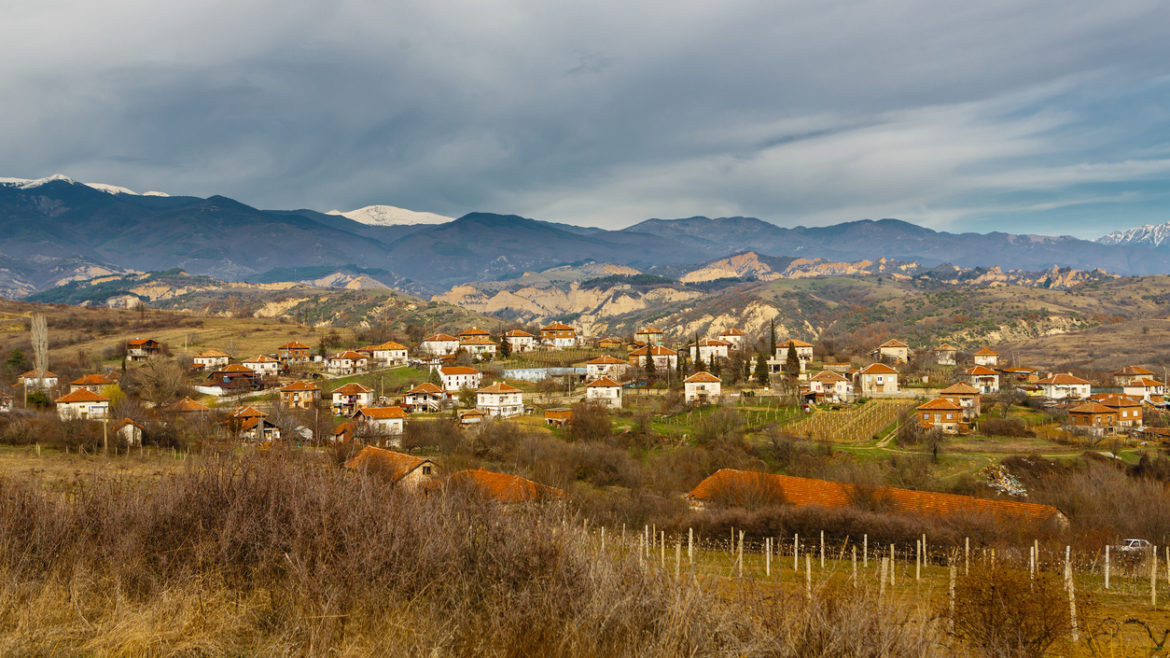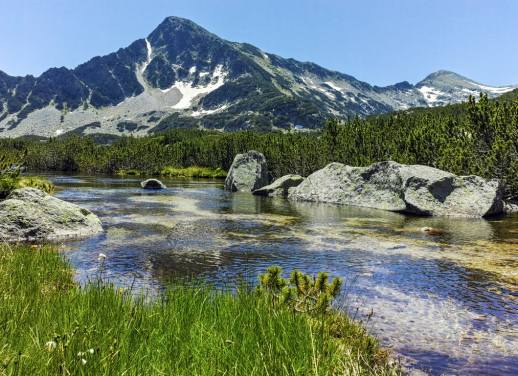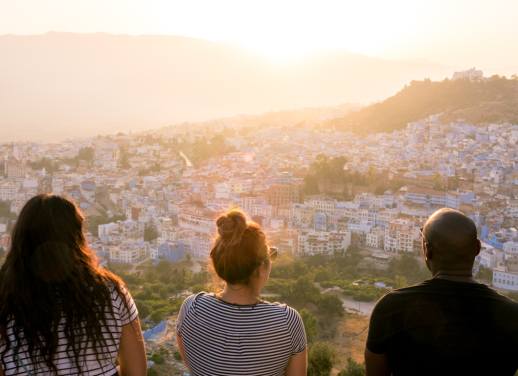When Dimitar Stoev of Starata Izba Parvenetz Winery, one of Bulgaria’s premier producers, asked if my husband and I would like to spend an afternoon in the century-old cellar, sampling wines direct from barrels where evolution was silently underway, we were silent. Both of us wondered if we’d misunderstood the wildly generous offer. A few tastes and barrels deep and the essence of Bulgaria’s contemporary wine culture began to reveal. A key benefit of visiting during this particular moment in time became clear: the opportunity for unparalleled access.
In this country, on the cusp of a wine tourism break-through, visitors are offered an immersion into the modern heart of a historic culture. At Starata Izba as well as each winery and vineyard visited, we met winemakers, heard their stories, and witnessed their passion for process and product. The sense of engagement provided understanding on a level not always afforded along the world’s more established and touristic wine routes.
RELATED: EXPLORE BEAUTIFUL BULGARIA ON THIS 8-DAY TOUR THROUGH EASTERN EUROPE
Many times during the visit, we heard winemakers refer to the famed regions of Bordeaux and Tuscany with longing and hope for the future; yet as travelers, we never longed to be elsewhere. Only vine and time will tell if enough wine enthusiasts embark on this route to transform Bulgaria into a new Bordeaux of wine tourism. What is evident now, especially when it comes to taste and tradition, is that the Balkan country’s vast appeal is uniquely and deliciously its own.
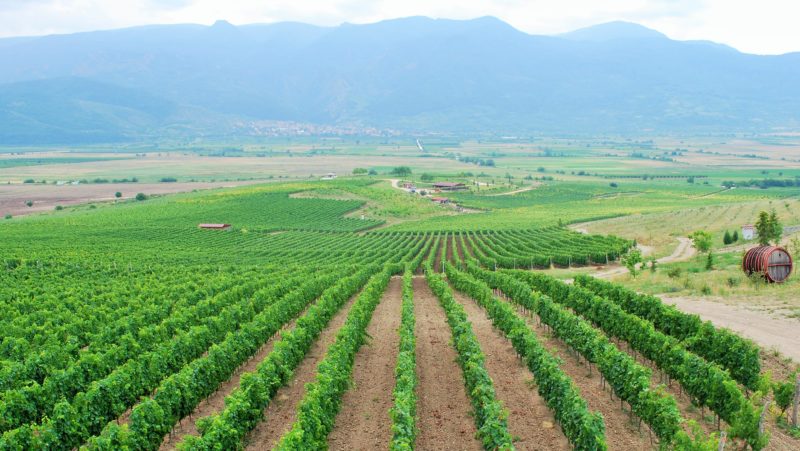
Villa Yustina Vineyard Park
A Fertile History
It’s impossible to appreciate Bulgaria’s wine present without considering the past. Many historians believe grape cultivation took root in this area over 5,000 years ago and credit the ancient elixir’s creation to Thracian tribes who worshiped Zagreus, also known as Dionysus, the god of wine. Zina Sorensen, co-founder of Bulgaria Wine Tours says that rich heritage is a thread connecting ancestors with contemporary producers. “The Thracians were winemaking masters and introduced a wine culture that still lives on in modern Bulgaria,” Sorensen says.
A succession of rulers, including Greeks and Romans, brought new expertise to the process as winemaking continued to evolve and flourish; stubbornly so, even during the Ottoman reign when alcohol was prohibited. Fast forward to contemporary times when production peaked in the 1970s and 80s as the communist regime’s nationalized industry became one of the world’s largest wine exporters. Privatization in the 1990s slowed production yet opened doors to new ways of thinking and focus on quality over quantity.
RELATED: 7 THINGS YOU DIDN’T KNOW ABOUT EASTERN EUROPE
Since joining the European Union in 2007, public and private investment coupled with a fresh entrepreneurial spirit have sparked this renaissance in viticulture and tourism. Today, boutique wineries specializing in native grapes varieties proudly celebrate tradition while embracing experimentation and innovation. The sense of excitement and potential is palpable, both to locals and visitors.
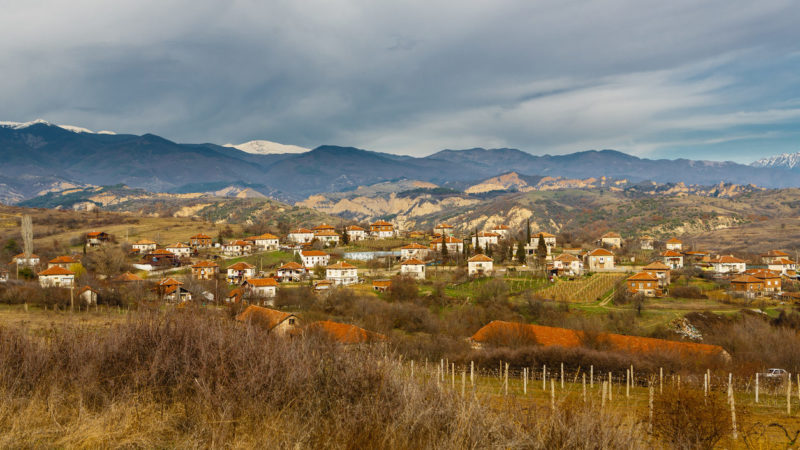
Bulgaria’s wine-making region in the southwest
A legend is born
Bulgarian-native Vasil Zlatev of Bulgaria Wine Tours becomes animated when sharing a myth of his favorite wine. The story begins when 9th century ruler Khan Krum banned alcohol consumption and ordered vines uprooted in order to better control his subjects. After a particularly victorious battle, the ruler visited the village of his star soldier. He asked the soldier’s mother, “How did you manage to raise such a strong boy? Your son is always first in battle and is very brave”. The proud mother then confessed the secret to success: a daily dose of bread and wine, harvested from her own vine. Not only did the Mighty Khan allow the mother to continue harvesting, he named the vine tree after her son, Mavrud.
To label the indigenous grape Mavrud as ‘legendary’ may be an understatement. Some historians believe it is the world’s oldest continuously vinified grape. Today, Mavrud production is flourishing in southern Bulgaria near the Rhodope Mountains, in the aptly named Thracian Valley. The deep, moody red wine has become a symbol of Bulgaria and source of national pride – and, I must admit, a personal favorite.
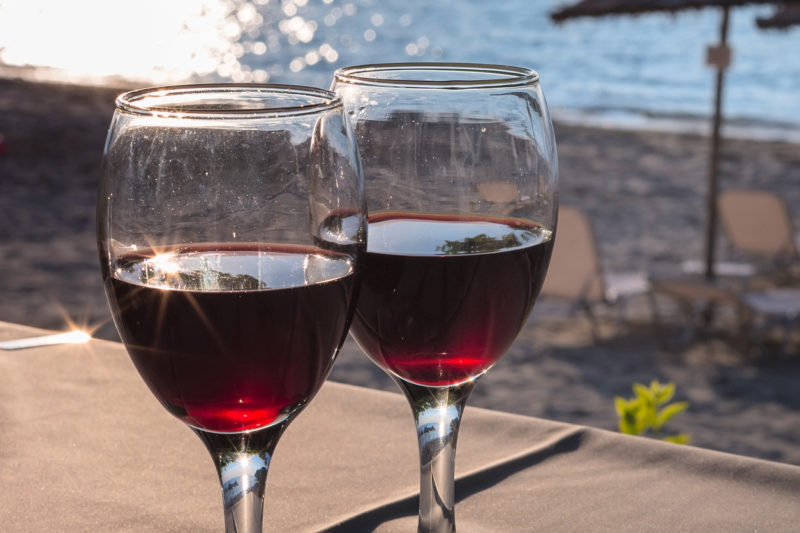
While wineries throughout the country produce international grape varieties such as Sauvignon Blanc, Chardonnay, and Pinot Noir with elegance, it is Bulgaria’s native grapes such as Mavrud that command the spotlight. The country boasts 44 registered native grape varieties (22 white and 22 red,) including Melnik, Dimyat, Mavrud and Rubin.
The latter two varieties combine in one of Thracian Valley’s most celebrated wines. Winemaker Krassimira Kodukova of Villa Yustina enjoys watching as visitors take the first sip of the winery’s signature blend, Monogram. Kodukova says the wine, matured in 100% Bulgarian oak barrels, perfectly conveys the essence of the land and people.
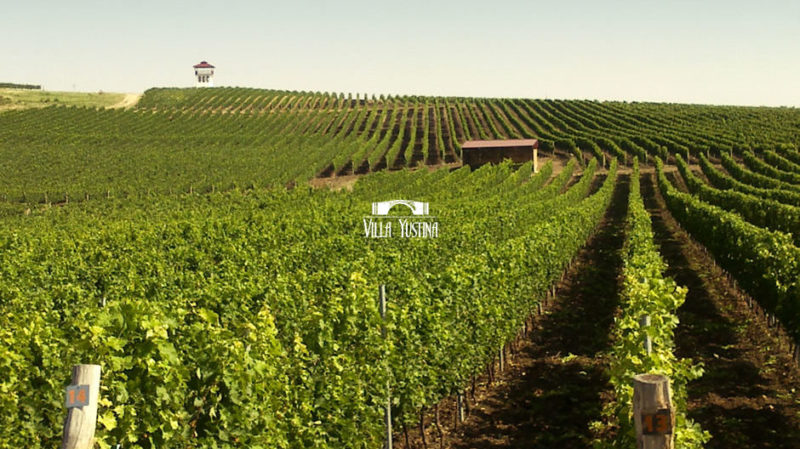
Villa Yustina
“Bulgarian oak gives more wild and earthy nuances to the wine,” explains Sorensen, describing hints of smoke, leather, and soil. “There is something special about a wine made from Bulgarian grape varieties and aged in Bulgarian oak. This taste can only occur here.”
As wine aficionados around the world take note, accolades and awards follow. In 2016, Bulgarian wines won 67 gold medals from three of the most recognized wine competitions – Concours Mondial du Bruxelles (including 4 Grand Golds there), Decanter World Wine Awards, and Mundus Vini Grand International Wine Awards. More recognition is sure to come in May when Sofia hosts over 1,000 of the world’s leading wine industry experts for the 40th World Congress of Vine and Wines.
Plot your immersion
Bulgaria’s small size makes it possible to explore each of the country’s distinctive wine regions in depth. Almost 300 wineries dot the landscape, with approximately 80 open to tours and tastings, usually by appointment only. Call ahead to reserve and request a tour in English.
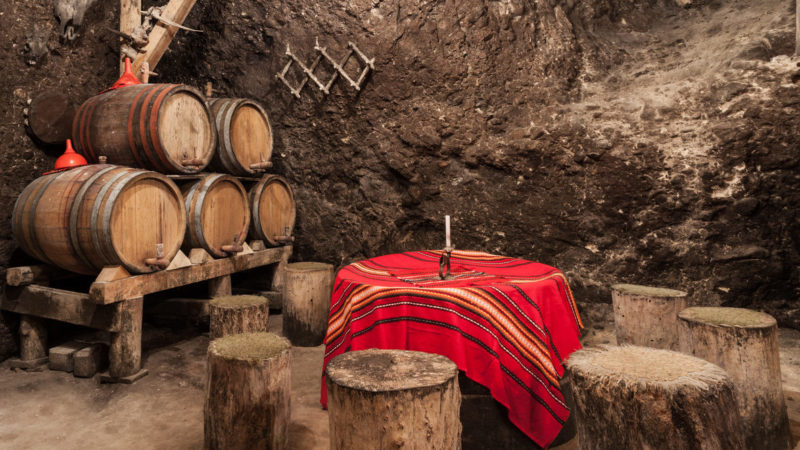
Wine cellar in Melnik
In addition to Thracian Valley, four primary regions offer a diversity of tastes and landscapes. The Danubian Plain region runs north of the Balkan Mountain range to Danube River and produces popular reds from Pamid and Gamza grapes. A beautiful drive among flower plantations leads to Valley of Roses, where more than 80% of the world’s rose oil is produced and the native Red Misket grape transforms into a dry white wine.
Along the Black Sea Coast where 30% of country’s vineyards are concentrated, visitors can taste a crisp, vanilla-tinged Dimyat mingled with sea air. And the Struma Valley region in Bulgaria’s southwest corner offers a temperate Mediterranean climate and cool Melnik wines.
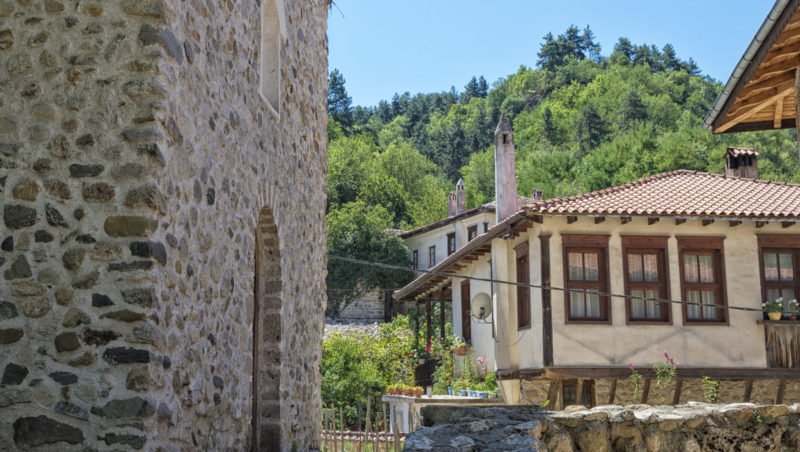
Traditional houses in Melnik
Bulgaria’s cosmopolitan capital Sofia provides access to northern and central wine regions, while the ancient city of Plovdiv is your gateway to Thracian Valley. While in Plovdiv, be sure to visit the enotecas Vinoculture and Vinopolis for wine flights paired with friendly and informative commentary.
For maximum festivity, plan your visit to coincide with a spring or fall wine festival or Bulgaria’s official wine holiday, St. Trifon’s Day on February 14th, when vines are pruned and the gods of wine – past, present, and future – are celebrated.
Tasting tips for first-time visitors
-Don’t be surprised when your tour is conducted informally by a winemaker or vineyard owner. Small to medium-sized producers generally have a hands-on approach, offering visitors personal and engaging experiences.
-Bulgarians are hearty wine drinkers, so tasting pours are often generous. Also, spittoons are generally used upon request only.
-When you toast a Bulgarian, be sure to make eye contact. It’s a sign of respect and connection. In return, you will likely hear an enthusiastic “Nazdrave, (наздраве,) which means “Cheers!”
Want to check out Bugaria’s wonders for yourself? This 8-day Eastern Europe Express trip is made for you.
Image Credits (top to bottom): Jessica Simpson, iStock x2, Jessica Simpson, iStock x2

